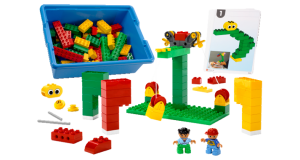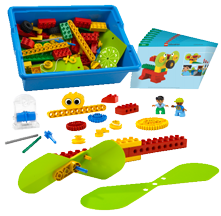LEGO Education & Hand Tools
Meet Mrs. Nalker & Ms. Gorman
Mrs. Nalker: I am so excited to be part of LakeView K-8 Academy as a STEM/LEGO teacher. I started out my career as a classroom teacher for 20 years (mostly 3rd grade) at Somers. I then went on to earn my Masters in Library Science and transferred to Stocker and then Somers as the Library Media Specialist for nine years. This is now my 30th year of teaching, and I am so pleased to bring LEGO education and STEM opportunities to our school. We will begin the year with our LEGO Education curriculum, followed up by an engaging unit using our Snap-On lab to learn all about tools, how and why they’re used, and what we can build with them. Kids will be engaged in using the tools daily and will end up with a final project to take home.
I am a strong believer in the learning process, and love to watch kids figuring things out through hands-on activities, problem solving and collaboration with their partners. Mistakes are welcome, as they lead us down the path of learning and of finding ways to solve the problems of the tasks at hand.
This year will be amazing and I can’t wait to see our students grow as engineers, builders, problem solvers and team members.
Sincerely,
Mrs. Nalker
Ms. Gorman: Coming soon
LEGO Education Science and Technology
LEGO Education Science and Technology solutions enable young children to behave as young scientists, by providing them with tools and tasks that promote scientific inquiry. Using our solutions, children are encouraged to pose ‘What if …?’ questions. They make predictions, test the behavior of their models, and then record and present their findings.
LEGO Education follows the 4 C’s process – Connect to a story, Construct a model, Contemplate its function, and Continue improving its design.
 Kindergarten: Early Structures
Kindergarten: Early Structures
Gives students a tangible understanding of how basic everyday structures such as bridges, towers, and walls work while also sparking curiosity about the exciting world of engineering. Students learn the basics of building solid, stable structures. Concepts include balance within structures, ways of building structures, and stability. They also explore basic structures such as towers, bridges, and walls. They use Duplo bricks and learn about weight distribution, under lapping and overlapping, levers, hinges, buttresses, suspension cables, pulleys and axles.
 1st Grade: Early Simple Machines
1st Grade: Early Simple Machines
Young students build fun and simple models using colorful elements such as a seesaw, rolling vehicle, spinning top, raft, and many more. By playing with and manipulating the models, children experience pulleys, levers, gears, and wheels and axles while exploring energy, buoyancy, and balance. Students will be working with gears and learning the principles of gearing up, gearing down, and how worm gears and crown gears are used. Most of the models we build in class have a moving component that students experiment or query with.
2nd Grade LEGO® Education WeDo 2.0
LEGO® Education WeDo 2.0 is developed to engage and motivate elementary students’ interest in learning science- and engineering-related subjects. This is done through the use of motorized LEGO® models and simple programming. WeDo 2.0 supports a hands-on, “minds on” learning solution that gives students the confidence to ask questions and the tools to find the answers and to solve real-life problems.
Students learn by asking questions and solving problems. This material does not tell students everything they need to know. Instead, it makes them question what they know and explore what they do not yet understand.
3rd – 4th Grade: Simple & Motorized Mechanisms
The kit size doubles, as well as the amount of time it may take for students to complete their builds. Students perform real science experiments with objective, record-able data. Students make predictions and conclusions for each experiment.
Students investigate everything from basic mechanical principles to advanced motor-powered machines while also acquiring key insights in science, engineering, and technology. They will build and explore machines and mechanisms, investigate motorized machines, calibrate and capture wind, and study gearing mechanisms.
Renewable Energy helps students explore solar, wind, and water energies. They will investigate energy supply, transfer, accumulation, conversion, and consumption; and use measurements and data analysis to describe and explain outcomes through hands-on activities and exciting, real-life models.
5th Grade: EV3
Students engage in computer science, science, technology, engineering, and math. Students build, program, and test their solutions based on real-life robotics technology. They are encouraged to brainstorm in order to find creative solutions to problems and then develop them through a process of selecting, building, testing, and evaluating. They build a robot using the “Robot Educator” model. They move through a series of computer programming lessons and learn how to program their robot to complete multiple missions.